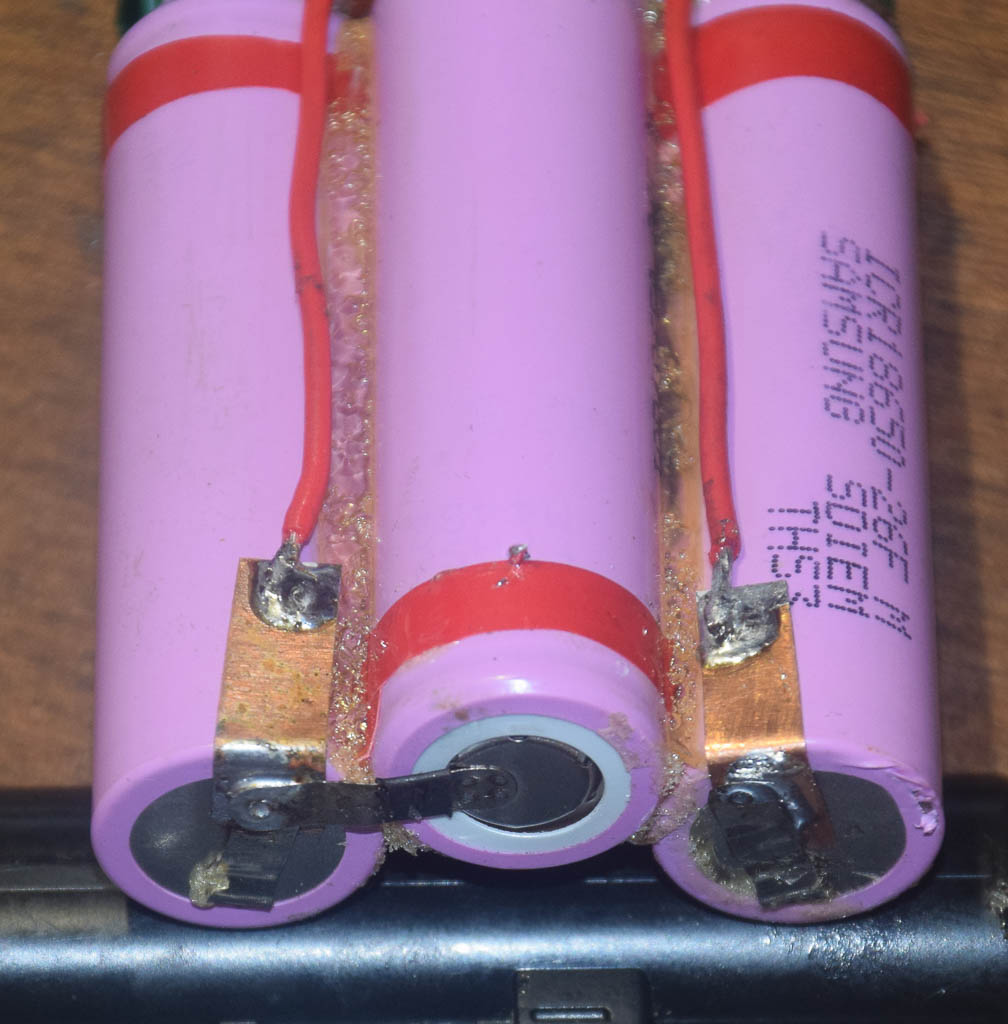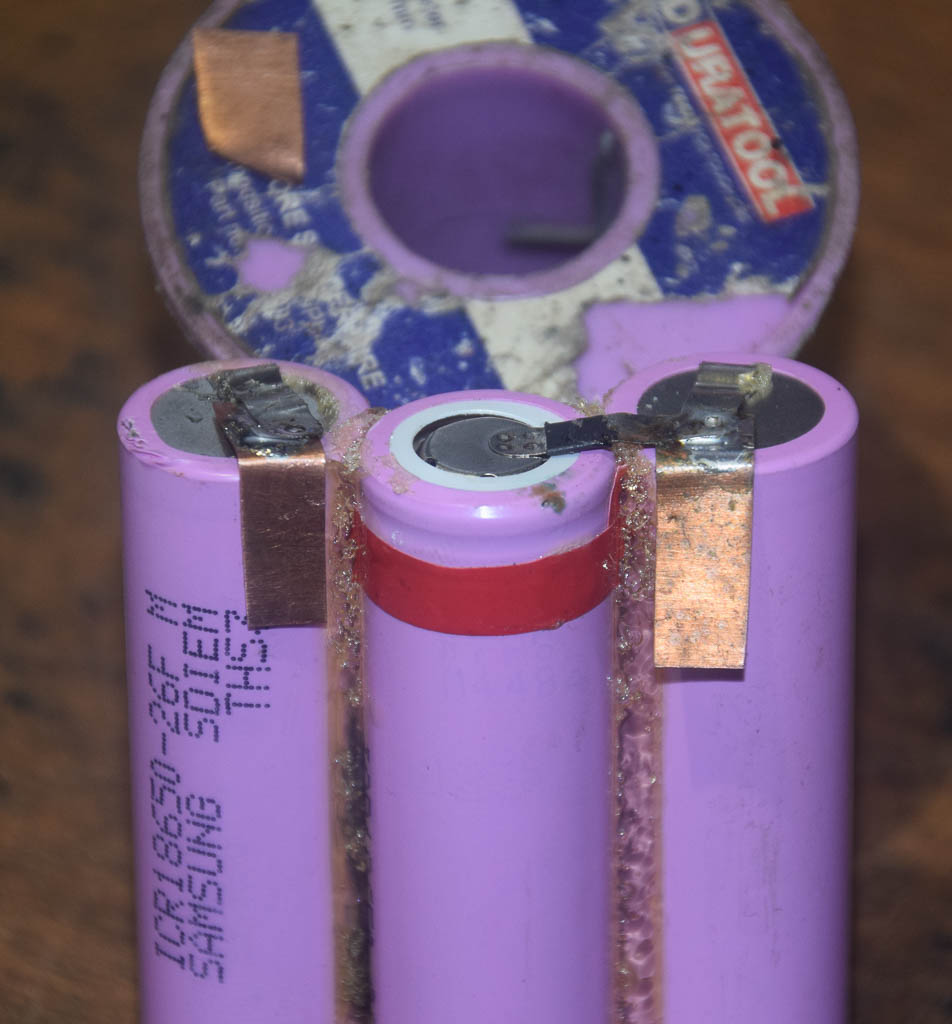| Moderated by: chrisbet, | Page:   1 2 3 4 5 1 2 3 4 5   |
|
|||||||
| Dis-charge / Re-charge cells , is much Too much ? - Page 3 | |
| Rechargable cells | Rate Topic |
| Author | Post |
|---|
| Posted: Sat Jul 28th, 2018 16:24 |
|
21st Post |
jk
|
Noooooooo, please dont! Very dangerous.
____________________ Still learning after all these years! https://nikondslr.uk/gallery_view.php?user=2&folderid=none |
||||||||
|
| |||||||||
| Posted: Sun Jul 29th, 2018 07:41 |
|
22nd Post |
GeoffR
|
Robert wrote: novicius wrote: The recommended action for a Li-ion battery fire is to cool the battery, or device, with water. There is no Lithium metal in a Li-ion battery. The fire risk is from the organic solvent that is the electrolyte not from any lithium metal. The reason for submerging in water is to cool the battery and prevent additional cells from becoming involved. This is what will happen if there is a fire in a phone or other device with a Li-ion battery onboard an aircraft. Watch the right hand video on this page Lithium battery advice: CAA. Note that using an extinguisher to knock down the fire will NOT cool the battery and reignition remains possible. The video shows the use of a BCF (Halon) extinguisher which remains legal for in-flight use.If a camera battery starts to smoke, dropping it in a sink full of water is probably the quickest, easiest and safest action.
|
||||||||
|
| |||||||||
| Posted: Sun Jul 29th, 2018 08:17 |
|
23rd Post |
Robert
|
Thank you for correcting me on that Geoff. I will edit my post. I had been under the impression that water was bad on Li-Ion batteries, we have too many technologies!
____________________ Robert. |
||||||||
|
| |||||||||
| Posted: Sun Jul 29th, 2018 08:28 |
|
24th Post |
GeoffR
|
Robert wrote: Thank you for correcting me on that Geoff.Unfortunately Robert many people see the word Lithium and remember the experiment with Sodium and water from school days. Unfortunately they don't do any research to find that the Lithium in a Li-ion battery is in the form of a Lithium salt, dissolved in an organic solvent to make the electrolyte. Finding the firefighting information for Li-ion batteries is much harder, indeed had my recurrent fire training not covered it I would probably still be looking. The advice given in other web sites is valid, evacuate the area etc. but none mentions the use of copious quantities of water, I have no idea why.
|
||||||||
|
| |||||||||
| Posted: Sun Jul 29th, 2018 10:18 |
|
25th Post |
novicius
|
Robert wrote:novicius wrote: Thank You Robert , for the Informative explanation , which means that I will go ahead with Replacing the cells in some old EN-EL4a `s ..instead of playing Dr.FOOL..
____________________ Back in Danmark I do not use my equipment to make photo`s .. I take photo`s to use my equipment The better I become at photography,the better my camera gets. |
||||||||
|
| |||||||||
| Posted: Sun Jul 29th, 2018 10:26 |
|
26th Post |
novicius
|
GeoffR wrote:Robert wrote:Thank you for correcting me on that Geoff.Unfortunately Robert many people see the word Lithium and remember the experiment with Sodium and water from school days. Unfortunately they don't do any research to find that the Lithium in a Li-ion battery is in the form of a Lithium salt, dissolved in an organic solvent to make the electrolyte. Finding the firefighting information for Li-ion batteries is much harder, indeed had my recurrent fire training not covered it I would probably still be looking. The advice given in other web sites is valid, evacuate the area etc. but none mentions the use of copious quantities of water, I have no idea why. Thank You Geof , for Clearing-Up this matter. Li-ion`s were Unchartered territory to me.. Like Robert says ; Too Many technologies..
____________________ Back in Danmark I do not use my equipment to make photo`s .. I take photo`s to use my equipment The better I become at photography,the better my camera gets. |
||||||||
|
| |||||||||
| Posted: Sun Jul 29th, 2018 10:44 |
|
27th Post |
GeoffR
|
novicius wrote: Too Many technologies..I don't think it is too many technologies, it is a preponderance of information on the internet and a shortage of trusted sites. I find the ICAO, IATA and UK CAA sites to be extremely useful and trustworthy. For many things relating to technology aviation authorities are likely to have good information or will link to authoritative sites. They have to offer good accurate information, lives depend upon it. The NTSB, AAIB, ATSB and other accident investigation bodies have good web sites too but they are harder to navigate unless you know where to look. Incidents, such as Lithium ion battery fires, are thoroughly investigated and the technologies researched. The report on this page ET-AOP has some excellent information on Li-ion batteries.
|
||||||||
|
| |||||||||
| Posted: Sun Jul 29th, 2018 11:11 |
|
28th Post |
Robert
|
Will read that link later, many thanks.
____________________ Robert. |
||||||||
|
| |||||||||
| Posted: Sun Jul 29th, 2018 22:06 |
|
29th Post |
novicius
|
GeoffR wrote:novicius wrote:Too Many technologies..I don't think it is too many technologies, it is a preponderance of information on the internet and a shortage of trusted sites. I find the ICAO, IATA and UK CAA sites to be extremely useful and trustworthy. For many things relating to technology aviation authorities are likely to have good information or will link to authoritative sites. They have to offer good accurate information, lives depend upon it. I did read the Report ... But at the end of the day , it was caused by a Short-Circuit.,...I have seen the leads of a regular A C Lead Fused/Welded together due to a Short circuit... I have read hair raising stories about Li-Ion`s ..I also read they`re rather " sensitive " .. As I am about to " refurbish " some EN-EL4 batt. holders re-using the original electronics from NIKON ,and I`m looking into Sanyo / L G cells...what is your take on this.. My question is :... Am I on the " right " track...or should I look into how much Robert would quote for rebuilding a burned down house.
____________________ Back in Danmark I do not use my equipment to make photo`s .. I take photo`s to use my equipment The better I become at photography,the better my camera gets. |
||||||||
|
| |||||||||
| Posted: Mon Jul 30th, 2018 04:35 |
|
30th Post |
Robert
|
Have checked back through this thread, I can't find which battery it is you are having trouble with. I recently (Feb 2018) re-celled a D3 battery, EN-EL4, new original EN-EL4's are about £150 in the UK, I can't afford that, ideally I want six cells minimum based on experience in the cold in Scotland, trying to photograph the Milky Way. I now have three good and one iffy battery. I am planning to create a power pack to power the camera in those conditions this next winter, that will avoid having to change batteries in the middle of a time lapse session and should be capable of powering the camera all night. I decided to re-cell one of my casings of a fairly old EN-EL4, it was extremely challenging, I converted two D1 batteries many years ago to 18650 cells. That was difficult because the casings had to be modified, the cells would not fit in the casings but ten years on they were still good. I use the 18650 cells in my dedicated Nichia UV 365nm lamp which I built. I thought I wrote up the EN-EL4 project here... it uses three 18650 dumb cells, meaning the cells are unprotected. The protection is in the EN-EL4 casing and includes a chip which controls the balance between the cells which are NOT in series. The cells have to be balanced, again I don't want to go into the deeper reasons but it's another of the issues involved with this technology, cell balancing. The output from cells varies at differing rates as the cells age, the output from the cells has to be very similar otherwise one starts pushing another, causing overheating. Cell balancing of Li-Ion cells is critical and probably the biggest challenge to creating large capacity batteries such as Geoff mentions for aircraft. There is no room in the plastic casing for link wires, I had to use 0.007" copper foil about 8mm wide, which gives a cross sectional area of about 1.2mm/square area. The original conductors are 1.2mm sq cross sectional area. Anything less will cause resistance and inhibit the camera shutter. I found that out with the D1 project. The PCB attaches to the cells at one end, the soldering is tricky, zero space for blobs. Remember, you are working with fully charged, live cells which must never be short circuited. I glued the cells together with Gorilla foaming glue and they sat on a shelf for ten days until the glue fully hardened and I was in a calm mood to do the soldering.    I used tagged cells because soldering to the can is a big no-no, the chemicals are in a plastic bag, tightly rolled up like a jam rolly-poly, soldering the can would likely melt the plastic and start a fire. The tags have to be spot welded on with a specialised spot welder, I was going to make one but the components for the welder would cost well over £100 so I baulked at that, I don't have plans to repeat this project. The cells were about £23 for the set of three, when I checked the price of a good complete replacement pattern battery from Germany it was £21. I would search long and hard for pattern batteries on line before even contemplating re-building a casing with new cells. I will try to find my article on the re-build but unless you are very skilled with soldering and able to source the right bits, including copper foil and tagged cells, which came from RS Components in UK, I would steer well clear of DIY in this case. I definitely won't be doing another. Re-building your house would be nice but Eric has me booked for a bungalow refurb in Yorkshire this fall, maybe... And I am still not finished on my own house yet! What about a tent? Edit: I have found the thread I compiled earlier in the year on re-celling an EN-EL4 battery: http://nikondslr.uk/view_topic.php?id=1496&forum_id=22
____________________ Robert. |
||||||||
|
| |||||||||
| This is topic ID = 1134 Current time is 00:43 | Page:   1 2 3 4 5 1 2 3 4 5   | |
| Nikon DSLR Forums > Camera and Lens Forums > Camera Accessories and Extras. > Dis-charge / Re-charge cells , is much Too much ? | Top | |
Users viewing this topic |
||
Current theme is Modern editor
| A small amount of member data is captured and held in an attempt to reduce spammers and to manage users. This site also uses cookies to ensure ease of use. In order to comply with new DPR regulations you are required to agree/disagree with this process. If you do not agree then please email the Admins using info@nikondslr.uk Thank you. |
Hosted by Octarine Services
UltraBB 1.173 Copyright © 2008-2025 Data 1 Systems
Page processed in 0.0752 seconds (70% database + 30% PHP). 91 queries executed.
UltraBB 1.173 Copyright © 2008-2025 Data 1 Systems
Page processed in 0.0752 seconds (70% database + 30% PHP). 91 queries executed.